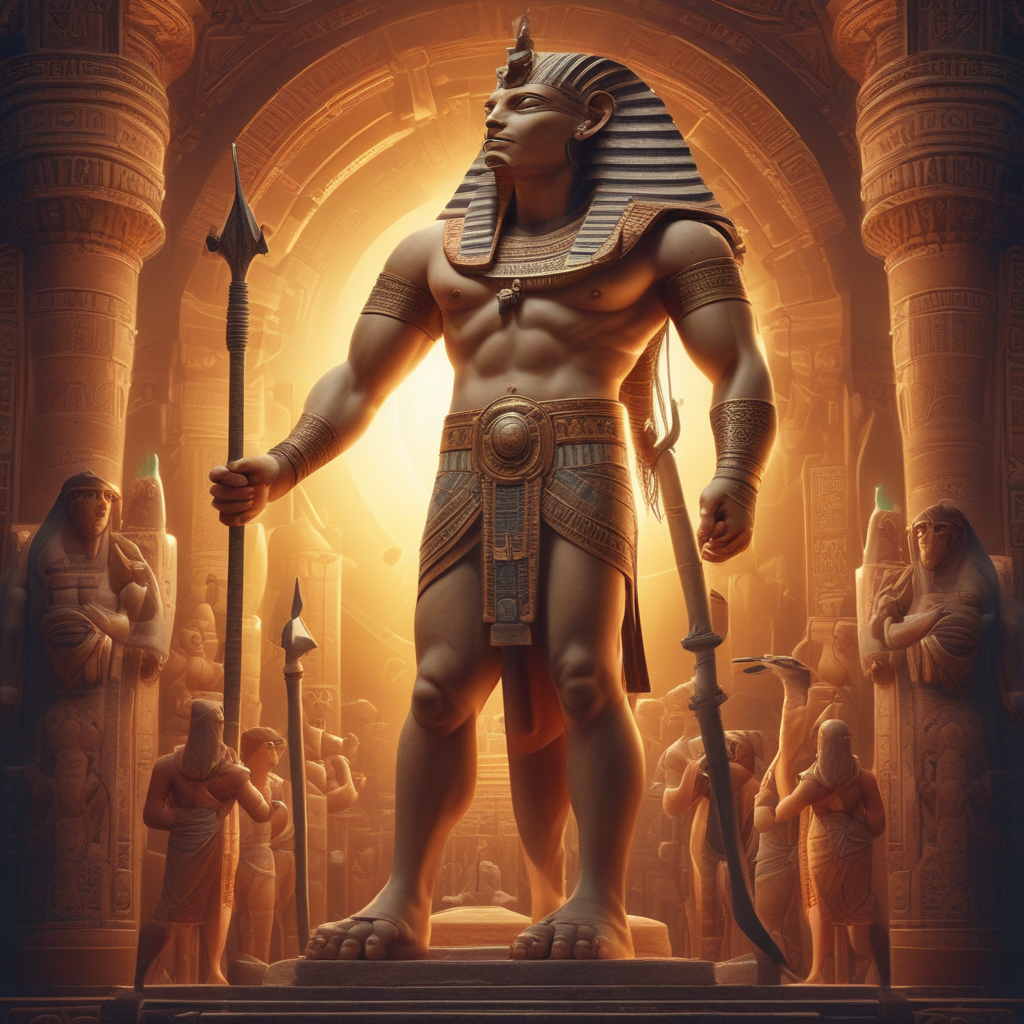The Myth of the God Hapi in Egyptian Mythology
Who is Hapi in Egyptian Mythology?
Hapi, sometimes spelled as Hapy or Hapi-ankh, is an ancient Egyptian deity associated with the Nile River and its annual floods – a vital aspect of Egyptian agriculture and life. Depicted as a symbol of fertility, abundance, and renewal, Hapi was revered as a benevolent god who brought prosperity to the land through the inundation of the Nile.
What Is Hapi’s Role in Egyptian Culture?
In Egyptian mythology, Hapi was believed to control the swelling and receding of the Nile, a phenomenon crucial for the success of agricultural practices in ancient Egypt. The annual flooding of the Nile brought rich, fertile silt that replenished the soil, allowing crops to flourish. As such, Hapi symbolized not only abundance but also the cyclical nature of life, death, and rebirth in Egyptian worldview.
How is Hapi Depicted in Art and Statues?
Often depicted as a masculine deity with a prominent belly symbolizing fertility and abundance, Hapi was typically portrayed with breasts, indicating nourishment and sustenance – a unique representation combining male and female characteristics. Hapi’s skin color was sometimes blue or green to represent the river’s life-giving waters. In temples and artworks, Hapi is shown carrying offerings such as blooming lotus flowers and papyrus, further emphasizing his role in natural abundance.
What Symbolism Does Hapi Represent?
Hapi embodies the fundamental aspects of fertility, prosperity, and the cyclical nature of life. As the god of the Nile floods, he symbolizes the annual regeneration and rejuvenation of the land, ensuring the sustenance and livelihood of the Egyptian people. Moreover, Hapi’s dual nature – combining male and female traits – reflects the unity of opposites in Egyptian belief, underscoring the interconnectedness of all living beings and natural elements.
With his essential role in Egyptian mythology as the provider of life-giving waters and fertility, Hapi remains a significant and revered deity, embodying the profound connection between nature, human existence, and spiritual beliefs in ancient Egypt.

Frequently Asked Questions about the Myth of the God Hapi in Egyptian Mythology
Who is Hapi in Egyptian mythology?
Hapi is the ancient Egyptian god of the annual flooding of the Nile River. Represented as a masculine figure with breasts symbolizing fertility, Hapi was integral to the prosperity of Egypt.
What was Hapi’s role in Egyptian society?
Hapi was revered for bringing fertility to the land through the Nile’s inundation, ensuring bountiful harvests. Egyptians believed Hapi’s blessings were essential for their agricultural success and the overall well-being of the kingdom.
How was Hapi depicted in Egyptian art?
Hapi was often depicted as a god with a prominent belly, wearing papyrus plants (symbolizing Lower Egypt) and lotus plants (symbolizing Upper Egypt) on his head. This imagery represented the unification of Upper and Lower Egypt through the Nile’s fertile waters.
What symbolism did Hapi represent?
Hapi symbolized abundance, fertility, and the life-giving properties of the Nile River. As a deity associated with nourishment and growth, Hapi played a crucial role in Egyptian mythology and everyday life.
Was Hapi worshipped in specific rituals?
Yes, Hapi was honored in ceremonies and festivals dedicated to the Nile’s inundation, known as the “Wag Festival



